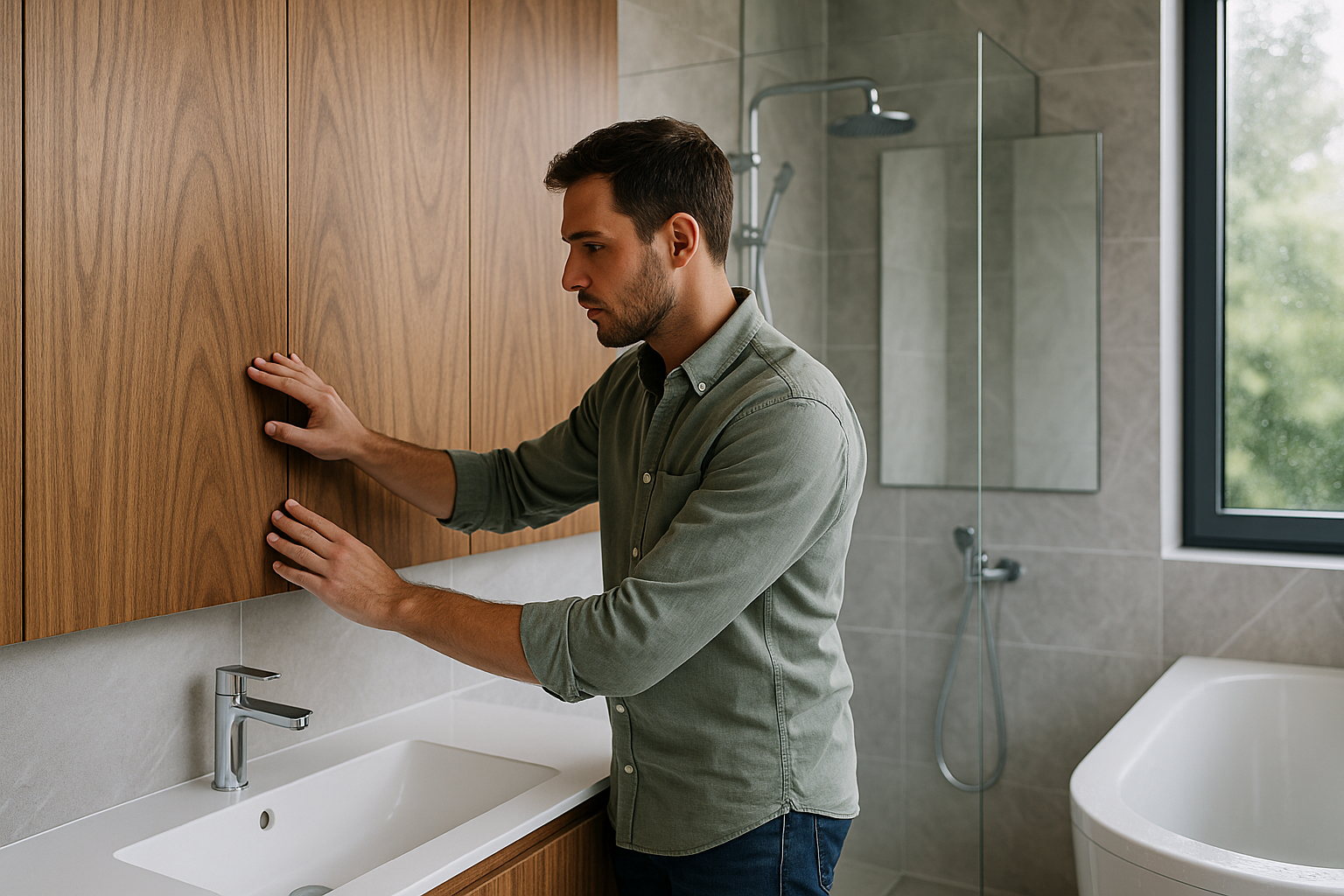Understanding the Impact of Humidity on Timber Veneers
Timber veneers are thin layers of real wood, which makes them prone to the same conditions that affect solid timber. In high-humidity environments, the moisture in the air can cause timber to expand, warp, or crack. Veneers, while thinner, are still susceptible to these issues if not properly treated or maintained.
In Australian coastal regions or areas with high moisture content, such as bathrooms or laundries, the challenge becomes keeping that veneer finish looking flawless despite the ever-changing levels of humidity. But don't worry—there are ways to make timber veneers work in these spaces.
Choose the Right Type of Timber for High-Humidity Areas
Not all timber veneers are created equal, and some perform better than others in high-humidity environments.
- Engineered Timber Veneers: These veneers are made by bonding thin layers of natural wood together, which helps to reduce the impact of moisture and temperature fluctuations. Engineered veneers such as EVO by Bord Products tend to be more stable and less prone to warping compared to traditional solid timber veneers. So, if you're looking for a long-lasting solution, engineered timber is a great choice.
- Reconstituted Veneers: Made from fast-growing timber species, reconstituted veneers offer uniformity in appearance and stability. These veneers are less prone to moisture-related issues, making them a suitable option for high-humidity spaces like kitchens and bathrooms.
- Hardwoods vs. Softwoods: If you are opting for solid timber veneers, hardwoods such as oak, jarrah, or blackbutt tend to perform better in humid environments compared to softwoods, which are more susceptible to moisture damage. However, hardwood veneers can still require protective treatments to maintain their integrity.
Proper Sealing and Finishing Is Key
One of the most important things to remember when installing timber veneers in high-humidity areas is to apply the right sealant. A quality sealer will create a moisture-resistant barrier that helps prevent the wood from absorbing excess moisture.
- Osmo Timber Oil: For Australian homeowners looking to maintain the natural beauty of timber veneers, we recommend using products like Osmo Timber Oil. This oil is specifically designed to protect wood surfaces, helping to prevent water damage, warping, and cracking. It also enhances the natural grain of the wood, ensuring your timber veneers look great for years.
Polyurethane and Varnishes: If you’re looking for a more durable finish, consider using a high-quality polyurethane or varnish. These finishes form a strong protective layer over the veneer, keeping moisture at bay. Just be sure to apply multiple coats for maximum protection.
Ventilation is Crucial
While timber veneers can be treated to withstand high-humidity environments, proper ventilation is just as important. In areas like bathrooms and laundries, installing a good exhaust fan can help reduce moisture levels and maintain a stable climate. This will not only protect your timber veneers but will also improve the overall longevity of your furniture and cabinetry.
Maintain Regular Care and Attention
Like any wood product, timber veneers in high-humidity areas require regular care and attention. Keeping surfaces dry, wiping up any spills immediately, and maintaining the right humidity levels in your home can make all the difference.
- Regular Dusting and Cleaning: Use a soft cloth to dust your veneer surfaces regularly, and clean them with a damp cloth to remove any moisture or dirt. Avoid using harsh cleaning chemicals that might damage the finish.
Monitor Humidity Levels: If you’re in an area with high humidity, consider investing in a hygrometer to monitor moisture levels. Keeping your home’s humidity level between 40% and 60% is ideal for timber veneer care.
Timber Veneers: A Beautiful and Practical Choice
When done right, timber veneers can bring a timeless, natural look to any high-humidity space in your home. By selecting the right type of timber veneer, sealing it properly, and ensuring good ventilation, you can enjoy the beauty of natural wood without worrying about moisture-related damage.
Whether you're renovating your coastal home, upgrading your kitchen, or adding character to your bathroom, timber veneers can be an elegant and durable choice. Just make sure you’re taking the necessary steps to protect your investment, because with the right care, your timber veneer can shine in even the most humid Australian environments.

Explore Bord Products
Our Melbourne facility produces hundreds of veneer and laminate panels daily, giving us total control over timeframes and quality.

Visit Our Showroom
Get expert advice on material selection for your project and see our entire range of veneers and laminates in person.

Specify Sustainable
We support sustainable forest management in Australia and across the globe. Look out for certified products on our website or speak to us.




